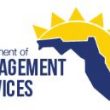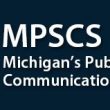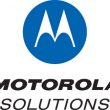Coming to America: TETRA-one way or another
Standards
TETRA is detailed in a digital radio standard adopted by ETSI, which has its headquarters in Sophia Antipolis, France. ETSI literature describes the institute as "a non-profit-making organization whose mission is to produce the telecommunications standards that will be used for decades to come throughout Europe and beyond."
Project 25, a process begun in 1989 by the Association of Public Safety Communications Officials – International to define an interoperable U.S. technology for public safety digital radio, accepted a frequency-division, multiple-access technology that has been adopted in the form of Telecommunications Industry Association and American National Standards Institute standards, supplemented by TIA Technical System Bulletins.
TIA describes itself as "a full-service national trade organization with membership of more than 1,000 large and small companies that provide communications and information technology products, systems, distribution services and professional services in the United States and around the world." TIA's stated mission is to represent "providers of communications and information technology products and services for the global marketplace through its core competencies in standards development, domestic and international advocacy, as well as market development and trade promotion programs."
TETRA proponents contend that ETSI has a global reach and that TETRA MoU signatories should license essential TETRA IPR in North America. Motorola, either as the sole North American IPR holdout or as the most visible of several holdouts, wants American users to demonstrate an appetite for TETRA before it will license its IPR. A demonstration acceptable to Motorola would be the adoption of TETRA as a TIA standard.
"Motorola supports its customers and user-driven standards throughout the world," a statement from Motorola reads. "Motorola has been a major supporter of and contributor to the ETSI TETRA standard in Europe and the TIA Project 25 standard in the United States. Motorola has agreed to license its essential IPR in each of these regions under fair and reasonable terms and conditions for the standards developed."
The ETSI IPR policy seems to require IPR licensing under fair, reasonable and non-discriminatory terms. Some manufacturers view regional restrictions as discrimination.
The market
Motorola contends that TETRA was developed to meet European user needs and that those needs differ from those of North American users. For example, population densities are higher in Europe, and police departments tend to be larger – characteristics that TDMA technology might serve better. FDMA technology embodied in Project 25 Phase I adapts well to large agencies that need a lot of channels and to small agencies that may need only one channel.
Which is better, TDMA or FDMA? The answer involves many factors, including licensed power, terrain or topogrophical conditions, environmental conditions, system size, location, complexity, coverage requirements, available transmitter sites, direct-mode requirements, simulcast requirements and multicast requirements. Although these factors are simple and easy to understand, they do not convey how complex the decision may become. Additional factors also might affect the selection of well-designed systems. At some point, though, a TDMA system might become more efficient than an FDMA system and vice versa.
Motorola has recognized that interest in TETRA exists in North America, especially in areas with high population density, such as New York and New Jersey. The company is addressing that interest through the standards committee.
"We do know that some customers are interested in TETRA. Yet, is interoperability important? Are the rural areas important?" Sturmon said.
A group that describes itself as "an association created to promote, discuss and enhance TETRA technology in North America," the North American TETRA Forum (www.tetraforum.org), is publicizing, if not stimulating, interest in TETRA among potential U.S. and Canadian customers. Its member list includes Nokia, Simoco, Com-Net Ericsson, Marconi Communications, Rohde & Schwarz and Kenwood. NATF conducted a workshop on Aug. 18, 2000, in Boston following the APCO convention. The workshop included discussions of the standards process and TETRA technology, presentations by users of TETRA systems in other countries, and product displays.
Also, Com-Net Ericsson has paired with Marconi to distribute Marconi's TETRA portfolio, including infrastructure, mobiles and portables for customized, turnkey private communications systems. The two companies will also jointly develop next-generation TETRA solutions.
"We definitely intend to sell TETRA equipment in North America," said Steve Savor, chief executive of Com-Net Ericsson.
Nokia is studying the market requirements and preparing to sell land-mobile radio systems in the United States and Canada.
"Nokia wants to see a fair chance to compete in the market, especially the 700MHz public safety band, before Nokia can proceed ahead with the full-scale investment necessary to begin business in the category, in this region," said Paul Pettersson, Nokia's director of TETRA business development. "It is hard to estimate how much time is needed because the answer depends on the regulatory decisions and decisions of other suppliers.
"We have been approached by a number of well-informed user organizations in public safety, utility and other professional areas. Apparently, there is a need for a serious alternative system supplier in the market," Pettersson said.
With more than 10,000 employees, Nokia already has a substantial presence in the North American wireless telephone market. While it also sells land mobile radio products, Nokia is primarily a radio system supplier.
"In North America, we would market the radio systems by ourselves, but we would seek alliances with companies in other related areas, such as system integration," Pettersson said.
Simoco, a UK-based manufacturer and successor to Philips Radio Communications Systems, has a global TETRA marketing strategy. It is seeking partners in anticipation of selling TETRA systems in North America. Simoco and Nokia have licensed their essential TETRA IPR to each other for worldwide use.
In the United States, TETRA might be most easily adapted for the new 764MHz-776MHz/794MHz-806MHz public safety frequencies (the "700MHz band") reallocated from TV broadcasting. Those frequencies are subject to a TV station relocation period extending to 2006 or well beyond for stations now occupying the band.









